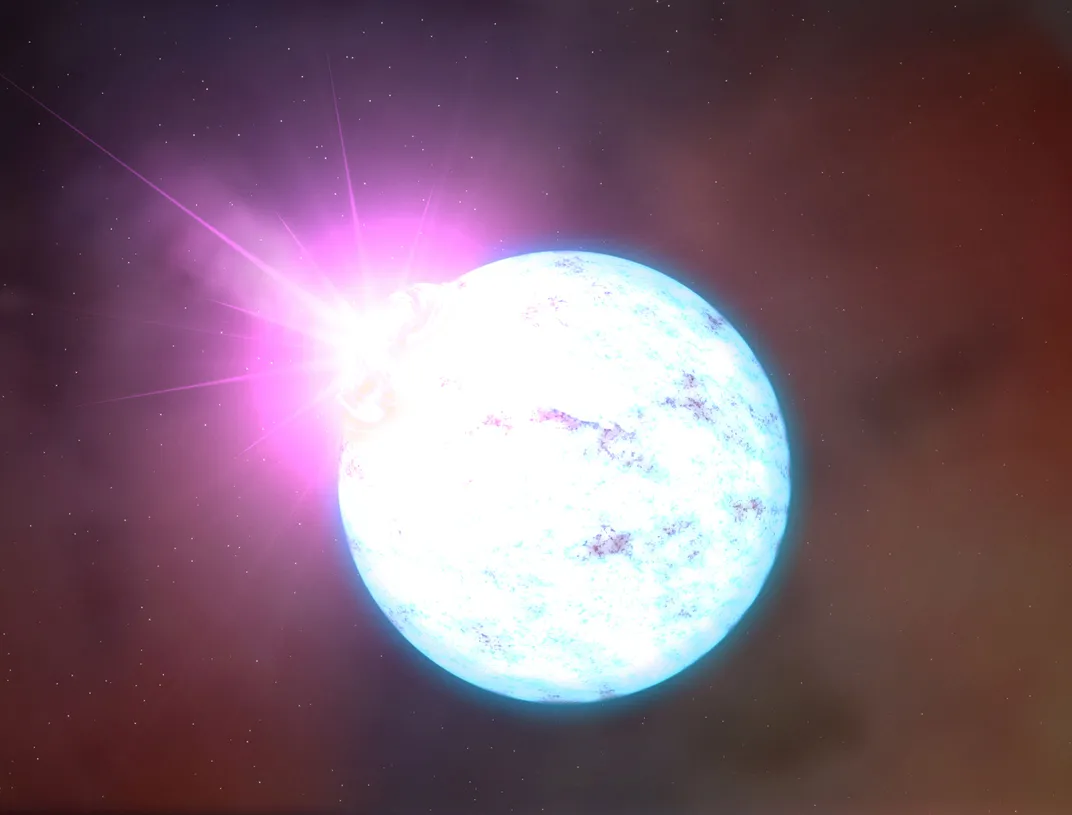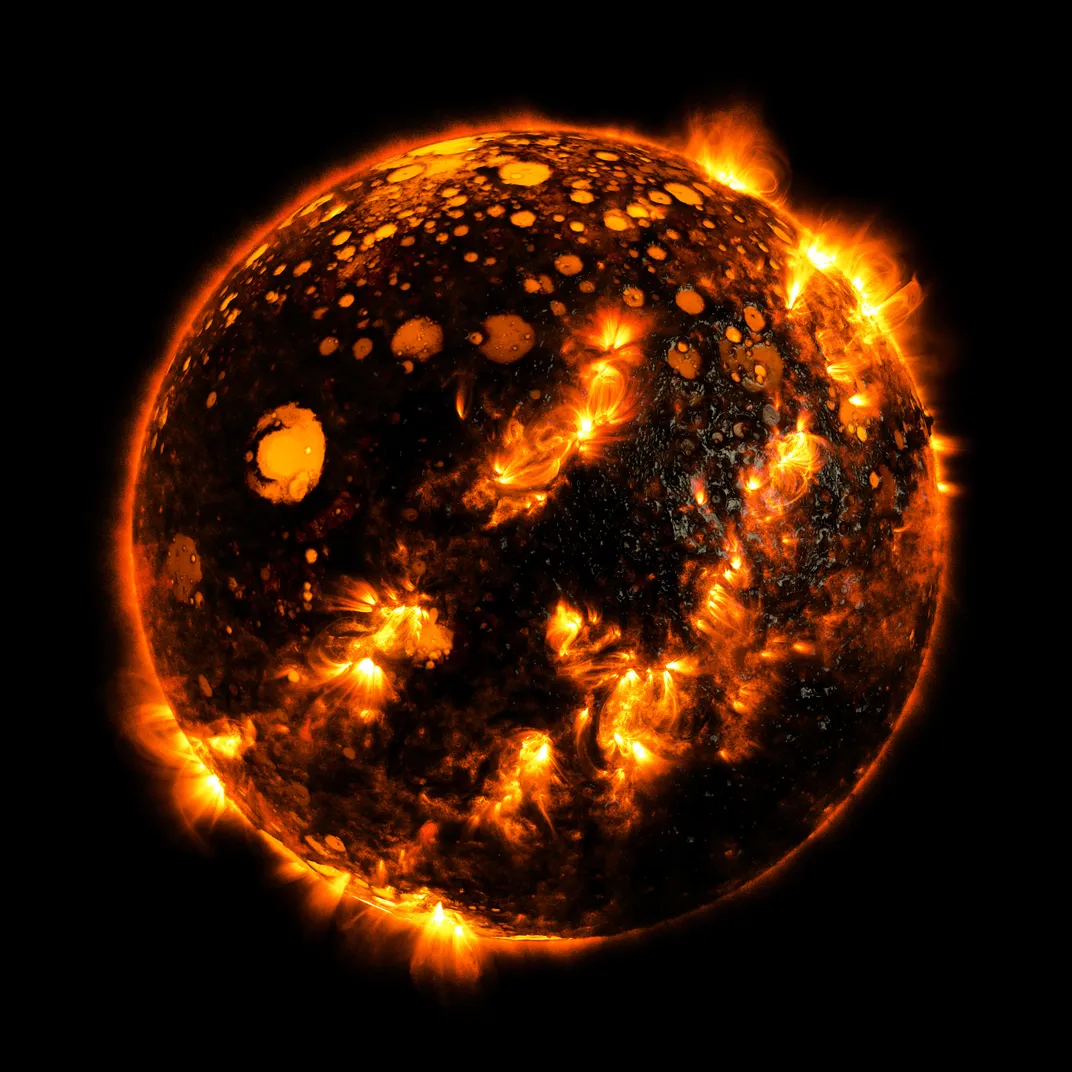Four Types of Stars That Will Not Exist for Billions or Even Trillions of Years
According to models of stellar evolution, certain types of stars need longer than the universe has existed to form
/https://tf-cmsv2-smithsonianmag-media.s3.amazonaws.com/filer/ba/b2/bab262b7-d78d-449f-9612-5e20bfaf0d62/ironstar.jpg)
The early universe was filled with strange and mysterious objects. Shortly after the Big Bang, large clouds of material may have formed black holes directly, without first coalescing into stars as we see today. Pseudo-galaxies lit up a sea of neutral hydrogen to make the universe transparent, releasing photons where before there was nothing but darkness. And short-lived stars made of nothing but hydrogen and helium may have flashed in and out of existence like sparks in the night.
More than 13 billion years later, the matter of the universe has settled into many types of stars of varying sizes, brightnesses and life spans. But the stars of today’s cosmos aren’t the only types of stars that will ever exist. In the far-flung future, many billions or even trillions of years from now, weird objects could arise as advanced stages of our present stars morph into entirely new celestial objects. Some of these objects may even serve as harbingers of the heat death of the universe, after which, it is impossible to know.
Here are four stars that may exist someday—if the universe survives long enough to birth them.
Blue Dwarf
/https://tf-cmsv2-smithsonianmag-media.s3.amazonaws.com/filer/93/ea/93ea364e-6fc3-4a67-970a-c71db4118181/bluesun.jpg)
Red dwarf stars, also called M-dwarfs, are thought to be the most common type of star in the universe. They’re small—sometimes no more voluminous than a gas giant planet—and low in mass and temperature (for a star). The smallest only have about 80 times the mass of Jupiter, while the sun, a G-type main-sequence star, is about 1,000 times the mass of Jupiter.
These relatively small and cold stars do have something else going for them, though. Astronomers believe red dwarfs can last for trillions of years, slowly churning hydrogen into helium, which means that some red dwarfs have been around for almost the entire age of the universe. A star with ten percent the mass of the sun can live for almost six trillion years, while the smallest stars, like TRAPPIST-1, can live twice as long, according to a 2005 paper. The universe is only about 13.8 billion years old, so red dwarfs are not even one percent through their lifespans.
By contrast, the sun only has five billion years or so before it burns through all of its hydrogen fuel and starts to fuse helium into carbon. This change will trigger the next phase of the sun’s evolution, first expanding into a red giant and then cooling and contracting into a white dwarf—an electron-rich type of stellar corpse that we see across the galaxy.
In trillions of years, red dwarfs will also begin to extinguish the last bits of their hydrogen reserves. The cool little stars will become extraordinarily hot for a time, radiating blue. Rather than expanding outward like the sun, a late-stage red dwarf is predicted to collapse inward. Eventually, once the blue dwarf phase is over, all that will remain is the husk of the star in the form of a small white dwarf.
Black Dwarf
/https://tf-cmsv2-smithsonianmag-media.s3.amazonaws.com/filer/a3/88/a388c4b8-25ea-4b46-811a-2912a7549d5b/blackdwarf.jpg)
Even white dwarfs won’t last forever, though. When a white dwarf exhausts its own supply of carbon, oxygen and free-flowing electrons, it will slowly burn out, transforming into a black dwarf. These theorized objects made of electron degenerate matter produce little, if any, light of their own—a true death of the star.
This future is the fate of stars like the sun—though it takes billions of years for a star to even begin the process of turning into a black dwarf. Toward the end of the sun’s life as a main-sequence star (which is about 10 billion years total, and the sun is 4.6 billion years old now), it will expand outward as a red giant, potentially as far as the orbit of Venus. It will stay that way for another billion years before becoming a white dwarf. NASA estimates that the sun will stay a white dwarf for around 10 billion years. However, other estimates suggest stars can stay in this phase for 1015, or a quadrillion, years. Either way, the time required to reach this stage is longer than the current age of the universe, so none of these exotic objects exist—yet.
At the end of a black dwarf’s life, the onetime star will experience proton decay and eventually evaporate into an exotic form of hydrogen. Two white dwarfs discovered in 2012 are a little past 11 billion years old—meaning they could be on their way toward black dwarf transformation. However, any number of things could slow down the process, so we’ll just have to keep an eye on them for the next few billion years to see how they progress.
Frozen Star

Someday, when the universe begins to run out of materials to cycle, having fused most of the lighter elements into heavier ones, there may be stars that burn only as hot as the freezing point of water. So-called “frozen stars” would churn at only 273 degrees Kelvin (about 0 degrees Celsius), filled with various heavy elements due to a scarcity of hydrogen and helium in the cosmos.
According to the researchers who conceptualized such objects, Fred Adams and Gregory Laughlin, frozen stars will not form for trillions upon trillions of years. Some of these stars may come from collisions between sub-stellar objects called brown dwarfs, which are larger than planets but too small to ignite into stars. Frozen stars, despite their low temperatures, would theoretically have enough mass to sustain limited nuclear fusion but not enough to shine by much of their own light. Their atmospheres may be polluted by ice clouds, with a feeble core radiating a small amount of energy. If they form as theorized, they would look a lot more like brown dwarfs than true stars.
In this distant future, the biggest stars around will only be 30 times the mass of the sun, compared to known stars today that are more than 300 times the mass of the sun. It’s predicted that stars will be much smaller on average during this time—many as small as 40 times the mass of Jupiter, barely simmering hydrogen into helium under the surface. In this cold and distant future, after the universe ceases to form stars at all, the large objects remaining will be primarily white dwarfs, brown dwarfs, neutron stars and black holes, according to Adams and Laughlin.
Iron Star

If the universe perpetually expands outward, as it is currently doing, rather than eventually collapse inward—and scientists aren’t sure which it’ll do—then it will eventually experience a kind of “heat death” where atoms themselves begin to fall apart. Toward the end of this time, some strikingly unusual objects may form. One of the most unusual could be the iron star.
As stars across the cosmos continually fuse light elements into heavier ones, eventually there will be an extraordinary amount of iron isotopes—a stable, long-lasting element. Exotic quantum tunneling will break through the iron at a subatomic level. This process, eventually, will give rise to iron stars—giant objects the mass of stars yet made almost entirely out of iron. Such an object is only possible, however, if a proton does not decay, which is yet another question that humans have not been alive long enough to answer.
No one knows how long the universe will last, and our species almost certainly won’t be around to witness the latter days of the cosmos. But if we could live and observe the sky for trillions of years more, we would certainly witness some remarkable change.
/https://tf-cmsv2-smithsonianmag-media.s3.amazonaws.com/accounts/headshot/IMG_3077.jpg)
/https://tf-cmsv2-smithsonianmag-media.s3.amazonaws.com/accounts/headshot/IMG_3077.jpg)